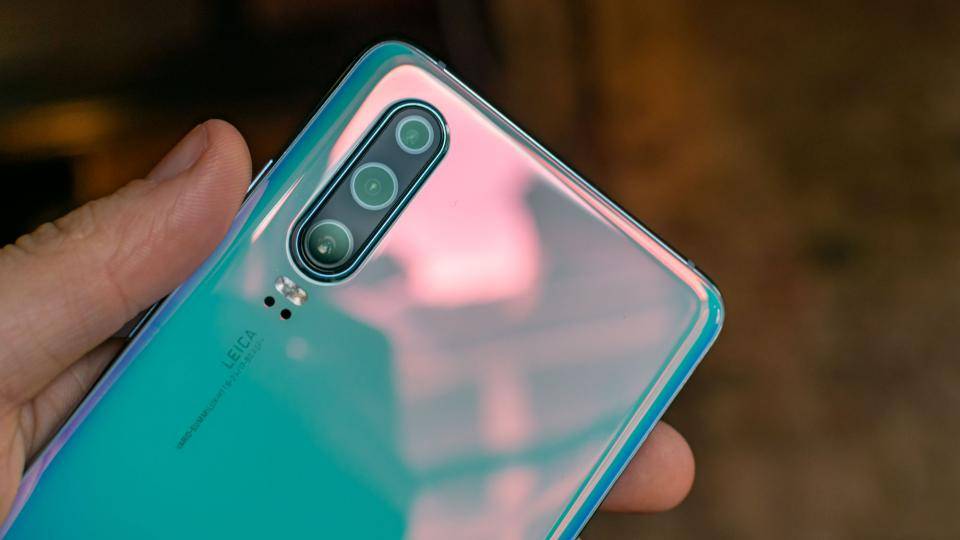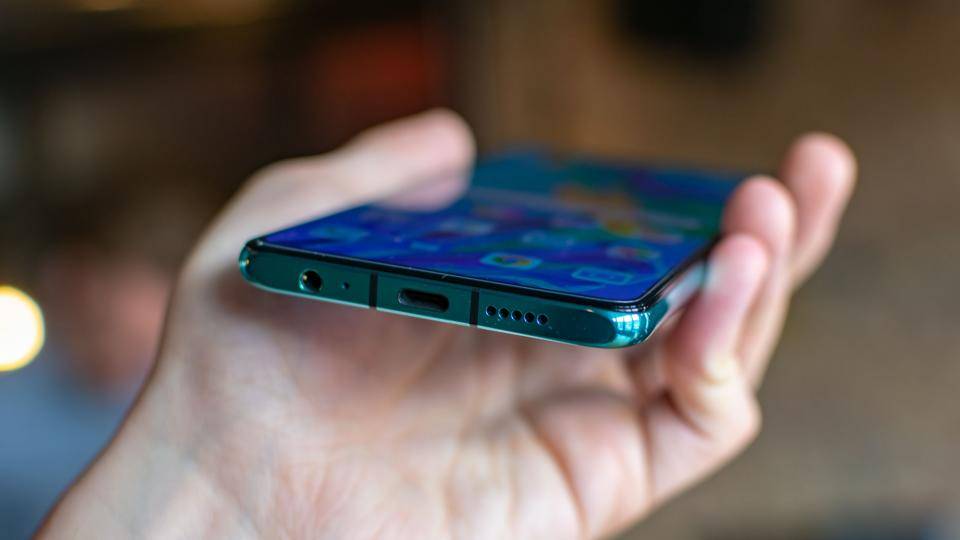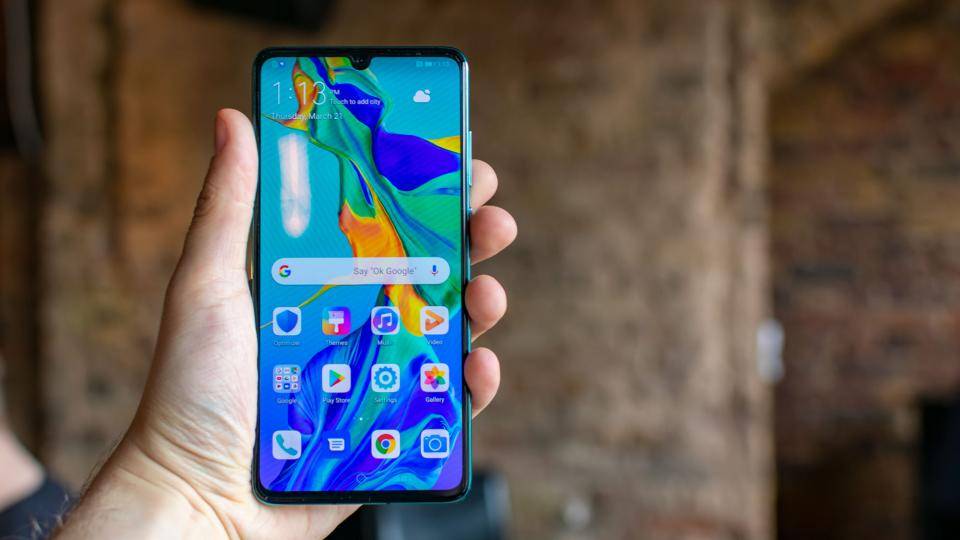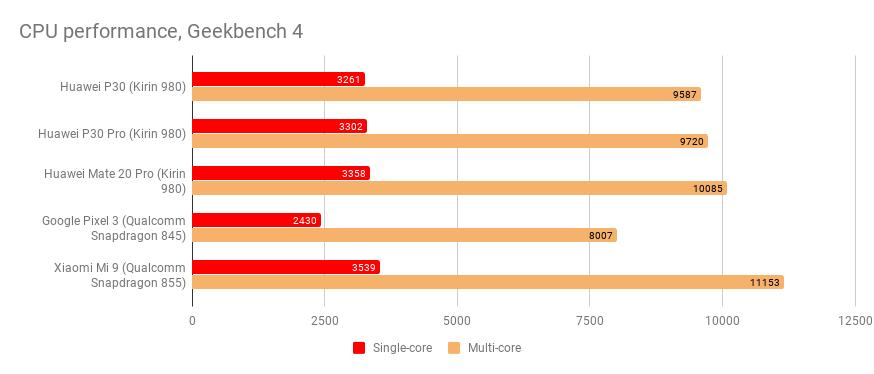After the recent news that Google is limiting access to Android on Huawei and Honor devices , sadly we can no longer recommend buying the Huawei P30. Though Google has promised that services including Google Play will continue to function on existing handsets, it's not yet clear how Huawei devices might otherwise be affected by this development. Until we know more, then, regrettably, we advise you not to buy this otherwise excellent device.
Since the ban, however, Huawei has revealed that it will be bringing the Android Q update to the P30, in addition to "popular current devices", despite the ongoing trade ban. There's no word yet on when this update might drop, but you can see the full list of Huawei phones that are set to receive the Android Q upgrade in our dedicated Huawei ban article .
Our original Huawei P30 review continues below
Huawei P30 review
You’re never short of a ludicrous hyperbole at a smartphone launch, and when the company doing the launching is as big and ambitious as Huawei, the linguistic gymnastics tend towards the fantastical. So I wasn’t particularly surprised to hear the phrase “transcendent iridescence” used to describe certain design elements of the Huawei P30, among other choice epithets such as “super spectrum” and “breathing crystal”.
The product these outlandish expressions were being used to describe is the sister phone to the ingenious Huawei P30 Pro , which is the Chinese firm’s flagship phone for the first half of 2019. It costs a little less than the P30 Pro and isn’t quite as exotic; the question is: do you buy it or stick with the bigger, better, more expensive P30 Pro instead?
READ NEXT: Best smartphones to buy today – here's our definitive list
Huawei P30 review: What you need to know
To make that decision, you first need to know how the two phones differ and that’s pretty simple, really. The first thing to say is that both are Android smartphones running the latest version of Huawei’s Android 9 Pie-based OS – EMUI 9.1 – both are available in the same range of two-tone colours, both have the same level of performance, and both have three cameras at the rear and one facing forwards, all with Leica-branded optics.
These are two fundamentally different phones, however. For a start, the Huawei P30 has a smaller screen, at 6.1in versus 6.5in, although the resolution is the same across both. It lacks the 5x optical telephoto lens of the P30 Pro, it isn’t as water-resistant, doesn’t have curved screen edges and the battery is smaller (3,450mAh versus 4,200mAh). The more basic phone also doesn’t have wireless charging or reverse wireless charging.
Buy now from Carphone Warehouse
Huawei P30 review: Price and competition
The biggest difference between these two handsets, however, is the price. Where the P30 Pro starts at £899 , the Huawei P30 is £200 cheaper at £699. There’s surprisingly little competition at around this price, with manufacturers pushing the cost of their flagship models towards £1,000 and beyond.
The prime contenders are the Samsung Galaxy S10e, which you can grab for £669 from John Lewis , and the Google Pixel 3, which costs around £739 . Both rival phones have smaller screens and fewer cameras than the Huawei P30 but are worth considering for other reasons.
Also worth a look are the OnePlus 6T (£499) , Honor View 20 (£500) and unbelievably good value (but not out in the UK yet) Xiaomi Mi 9, which has a Snapdragon 855 inside and costs around £450.
Huawei P30 review: Specifications, price, release date
6.1in, 1,080 x 2,340 AMOLED display
Octa-core Kirin 980 processor (2 x 2.6GHz, 2 x 1.92GHz, 4 x 1.8GHz)
6GB RAM
128GB of storage (expandable via nano memory card)
Three rear cameras: 40MP f/1.6 primary; 16MP f/2.2 ultrawide; 8MP f/2.4 3x telephoto with OIS
Selfie camera: 32MP, f/2
3,450mAh battery
IP53 dust and water-resistance rating
Price: £699
Release date: Preorders open from 27 March
Huawei P30 review: Design, key features and first impressions
Last year, we were disappointed with the regular Huawei P20 for various reasons, but not because of the design. That continues in 2019 with the Huawei P30, which looks stunning in its shimmering sheen. I'm loathed to credit anything to Huawei’s marketing team here but, let’s face it, “transcendent iridescence” isn’t far off.
The P30 is available with the same colour options as the P30 Pro – pearl white, "breathing crystal", amber sunrise, aurora – even the boring black model looks great with its gunmetal, silverish gleam catching the light and glistening menacingly. And, while the screen at the front doesn’t have the swooping “3.5D” curved edges of the P30 Pro, that doesn’t affect the overall look overly negatively.

Beyond mere aesthetics, though, the design changes to the P30 over the P20 from last year are limited to subtle tweaks. On the rear, the camera housing is a little longer, due to the fact that there’s one more camera than the old Huawei P20 and it sticks out a little more, too, resulting in even more of an annoying rocking action when you rest it on a flat surface. If you’re in the habit of texting and browsing your phone while it’s sitting on your desk, you'll want to buy a case right away.
The top and bottom edges have gained a slightly more squared-off profile than last year, but, thankfully, there are no Sony-style sharp-edges here so the phone slips neatly into your pocket without catching. I also like that the display is a touch smaller. By current flagship standards, the P30’s 6.1in screen makes it almost compact.

Elsewhere, it’s good to see that Huawei has kept a 3.5mm headphone socket in the P30 (the P30 Pro doesn’t have one). This resides alongside the USB Type-C port and speaker grille on the bottom edge, with the power and volume rocker on the right edge and the dual-SIM/nano memory card slot on the left. Why Huawei has abandoned the popular microSD format, I’m not entirely sure, but it does at least give you the opportunity to expand, as long as you don’t mind spending too much money .
READ NEXT: Best mid-range smartphone
Huawei P30 review: Display quality
The Huawei P30's screen may be smaller than that of the P30 Pro, but it's just as good. It has an aspect ratio of 19.5:9, uses an AMOLED panel and has a resolution of 1,080 x 2,340 for a pixel density of 422ppi. That’s not the highest resolution you’ll see on a smartphone at this price, but it’s perfectly sharp for most purposes.
It’s incredibly bright, too, with highlights peaking at around 824cd/m2 in auto-brightness mode, when measured with a white patch covering 10% of the screen area against a black background on the homescreen. Contrast is effectively perfect as it’s an AMOLED display so black really is black, not some slightly grey version of it.

As for colour performance, the P30 gives you two modes to choose from: Normal and Vivid. In Normal mode, you get a more muted set of colours and 93.8% of the sRGB colour space. Vivid mode is best for watching movies or TV and covers 91% of the DCI-P3 colour space. With HDR10 support as well, Netflix and Amazon Prime content looks fabulous, although it's not quite a match for Samsung's Dynamic OLED display in the vibrancy stakes.
The one niggle I have with the display is that the blue-light-reducing “eye comfort” mode isn’t all that strong. Even with the colour temperature slider slid all the way over to the “warm” side of the slider, the effect isn't all that dramatic. This is a personal preference, though – I like a more orangey look to my blue-light reduction mode and this doesn't quite cut it.
Buy now from Carphone Warehouse
Huawei P30 review: Performance and battery life
Internally, there’s nothing at all wrong with the Huawei P30, though. In fact, it uses the same chipset as the pricier Huawei P30 Pro – the 2.6GHz octa-core Kirin 980 – with only the RAM (6GB) and storage (128GB) differing.
The chipset is the latest and greatest from Huawei’s home-grown Kirin range and comprises three CPUs: one dual-core CPU running at 2.6GHz, another dual-core CPU running at 1.92GHz, and a low-power quad-core CPU running at 1.8GHz – all manufactured with an 8nm fabrication process.
It's not the first time we’ve seen the Kirin 980. The chip made its first appearance inside the Huawei Mate 20 Pro and it’s just as good here as it was in that phone, lending the Huawei P30 a snappy, responsive feel and superb performance across all benchmarks. In fact, since the Huawei P30 also has the same-resolution display as the P30 Pro, the numbers are pretty much identical. The problem for the Huawei P30 is that the Xiaomi Mi 9 is even better and costs a lot less.

I was worried that the Huawei P30’s battery life might suffer but in the end that, too, turned out to be excellent. Despite being down 18% on capacity on the one in the Huawei P30 Pro, the P30 still managed to eke out a time of 18hrs 32mins in our video-rundown test. That’s pretty darned good by any measure, and a better result than the Mate 20 Pro. It’s admittedly a good notch behind the Huawei P30 Pro, though.
This is a result that translates to a good day and a half of moderate use without having to plug it in and, if you're careful with it, the battery can go for even longer. Again, though, the Xiaomi Mi 9 beats it and the Huawei P30 Pro hands down.
Huawei P30 review: Cameras
Another reason to choose the P30 Pro over the P30, on paper at least, is the camera – or the cameras, I should say. That’s because the P30 lacks the incredible 5x optical telephoto of the P30 Pro, replacing it with a 3x zoom.
On the other hand, the P30's three rear cameras are still great. The primary camera has a 40-megapixel sensor, just like the P30 Pro, and that sensor measures the same 1/1.7in and employs the same whizzy “SuperSpectrum” technology for supposedly improved low-light performance. SuperSpectrum, for those who don’t know, refers to the use of an RYB (red, yellow, blue) filter to impart colour to images instead of the usual RGB (red, green, blue) filter.
The differences are that the P30's main camera has a slower f/1.8 aperture and no optical image stabilisation. In practice, these small differences don’t amount to much. If anything, the smaller aperture gives slightly sharper results on the P30 over the P30 Pro, but you'd have to crop right in to see the differences.
In theory, the faster aperture on the Huawei P30 Pro, coupled with its optical stabilisation, should give it a significant advantage in low-light photography and that much does appear to be the case. In our low-light studio scene below, the P30 set exposure at a shutter speed of 1/33 seconds and ISO 400; the P30 Pro set it at 1/33 seconds and ISO 320. Examining areas of fine detail – the handle of the mug in the comparison image below – you can see that this results in crisper details on the P30 Pro, as well as superior contrast, but you have to crop right in to see those differences.
That’s the primary camera. Next up, the ultra-wide camera, which is less subtly different to the ultra-wide camera on the P30 Pro. On the Huawei P30, you’re getting a 16-megapixel camera with an aperture of f/2.2 and a field of view equivalent to a 17mm lens on a 35mm camera; on the P30 Pro, it’s a 20-megapixel camera with an aperture of f/2.2 and a field of view equivalent to a 16mm lens on a 35mm camera. Neither have OIS and both produce images that, even on close inspection, are indistinguishable from one another.
For the zoom, however, it’s an entirely different story. The comparison below, in which I compare the Huawei P30 Pro at optical 5x with the hybrid zoom of the P30, shows how big the difference is in image quality when you’re zoomed right in. Whether you actually need a 5x zoom or not is debatable, but it’s impossible not to be impressed by how good the P30 Pro is, especially when you consider that you can enable hybrid mode to get even closer at 10x.
The rest of the camera setup is a touch less impressive. The P30 has a 32-megapixel f/2 selfie camera, but much of the detail this is capable of capturing is smoothed away by Huawei’s over-aggressive image processing.
And 4K remains an Achilles heel for Huawei. Although image stabilisation is much improved over the Mate 20 Pro, you’re still unable to shoot 4K at 60fps, which the opposition, even down to budget level, have been able to do for some time. And although it would be nice to use the optical zoom in video mode, there’s no way to transition smoothly from one zoom level to the next – there’s lots of skipping and jumping around.
That’s not to mention the crazily complex camera app, which forces users who want to use the 40-megapixel camera at native resolution to switch to 10 megapixels before making the ultra wide-angle and telephoto modes available.
Overall, then, it’s another great effort from Huawei on the smartphone camera front, but it's not without its flaws.
Huawei P30 review: Verdict
The Huawei P30, perhaps inevitably, suffers by comparison to the sexier P30 Pro . It isn’t as big or as gloriously capable in the camera department, but it deserves, at the very least, to be considered on its own merits.
It competes much more closely with the P30 Pro than its predecessor, the Huawei P20 , did with the P20 Pro last year. It has a great set of cameras, shares some of the P30 Pro’s new technology, has the very same core chipset and looks absolutely fabulous, even in black.
It’s also a better-value phone than the Pixel 3 , which can’t match the P30’s battery life, or the Samsung Galaxy S10e , which has a less extensive array of cameras. In its price bracket, then, the Huawei P30 stands alone. It’s a much better smartphone than many will give it credit for.
